2018 河南高考英语真题及答案
(考试时间:120 分钟试卷满分:150 分)
注意事项:
1.答卷前,考生务必将自己的姓名、准考证号填写在答题卡上。
2.回答选择题时,选出每小题答案后,用铅笔把答题卡上对应题目的答案标号涂黑。如
需改动,用橡皮擦干净后,再选涂其他答案标号。回答非选择题时,将答案写在答题卡上,
写在本试卷上无效。
3.考试结束后,将本试卷和答题卡一并交回。
第一部分 听力(共两节,满分 30 分)
做题时,先将答案标在试卷上。录音内容结束后,你将有两分钟的时间将试卷上的答案
转涂到答题卡上。
第一节(共 5 小题;每小题 1.5 分,满分 7.5 分)
听下面 5 段对话。每段对话后有一个小题,从题中所给的 A、B、C 三个选项中选出最佳
选项。听完每段对话后,你都有 10 秒钟的时间来回答有关小题和阅读下一小题。每段对话
仅读一遍。
例:How much is the shirt?
A. £ 19. 15.
B. £ 9. 18.
C. £ 9. 15.
答案是 C。
1.What will James do tomorrow ?
A.Watch a TV program.
B.Give atalk.
C.Write a report.
2.What can we say about the woman?
A.She's generous.
C.She's helpful.
3.When does the train leave?
A.At 6:30.
10:30.
4.How does the womango to work?
B.She's curious.
B.At8:30.
C.At
A.By car.
B.On foot.
�
C.By bike.
5.What is the probable relationship between the speakers?
A.Classmates.
B.Teacher and student.
C.Doctor and patient.
第二节(共 15 小题;每小题 1.5 分,满分 22.5 分)
听下面 5 段对话或独白。每段对话或独白后有几个小题,从题中所给的 A、B、C 三个选
项中选出最佳选项。听每段对话或独白前,你将有时间阅读各个小题,每小题 5 秒钟;听完
后,各小题将给出 5 秒钟的作答时间。每段对话或独白读两遍。
听第 6 段材料,回答第 6、7 题。
6.What does the woman regret?
A.Giving up her research.
B.Dropping out of college.
C.Changingher major.
7.What is the woman interested in studying now?
B.Education.
A.Ecology.
C.Chemistry.
听第 7 段材料,回答第 8、9 题。
8.What is the man?
A.A hotel manager.
B.A tour guide.
C.A
taxidriver.
9.What is the man doing for the woman?
A.Looking for some local foods.
B.Showing her around the seaside.
C.Offering information about a hotel.
听第 8 段材料,回答第 10 至 12 题。
10.Where does the conversation probably take place?
A.Inan office.
B.Athome
C.Ata
restaurant.
11.What will the speakers do tomorrow evening?
A.Goto a concert.
B.Visita friend.
�
B.Joan.
C.Workextra hours.
12.Who is Alice going to call?
A.Mike .
C.Catherine .
听第 9 段材料,回答第 13 至 16 题。
13.Why does the woman meet the man?
A.To look at an apartment.
B.To deliver some furniture.
C.To have a meal together.
14.What does the woman like about the carpet?
A.Its color.
B.Its design.
C.
Its
quality .
15.What does the man say about the kitchen?
A.It's a good size.
B.It's newly painted.
C. It's
adequately equipped .
16.What will the woman probably do next?
A.Go downtown.
B.Talk with her friend.
C.Make
payment .
听第 10 段材料,回答第 17 至 20 题。
17.Who is the speakerprobably talking to?
A.Movie fans.
B.News reporters.
C.College students .
18.When did the speaker take Englishclasses?
A.Before he left his hometown.
B.After he came to America.
C.When he was 15 years old.
19.How does the speaker feel about his teacher?
A.He's proud.
B.He's sympathetic.
C.He's
grateful .
20.What does the speaker mainly talk about ?
�
A.How education shaped his life.
B.How his language skills improved.
C.How he managed his business well.
第二部分阅读理解(共两节,满分 40 分)
第一节 (共 15 小题;每小题 2 分,满分 30 分)
阅读下列短文,从每题所给的 A、B、C 和 D 四个选项中,选出最佳选项。
A
Washington, D.C. Bicycle Tours
Cherry Blossom Bike Tour in Washington, D.C.
Duration Tour
This small group bike tour is a fantastic way to see a world-famous cherry trees
with beautiful flowers of Washington, D.C. Your guide will provide a history lesson
about the trees and the famous monuments where they blossom. Reserve your spot before
availability — the cherry blossoms—disappear!
Washington Capital Monuments Bicycle Tour
Duration:3 hours (4 miles)
Join a guided bike tour and view some of the most popular monuments in
Washington,D.C.Explore the monuments and memorials on the National Mall as your
guide
shares
uniquefacts
and
history
at
each
stop.Guided
tour
includes
bike,helmet,cookies and bottled water.
Capital City Bike Tour in Washington,D.C.
Duration:3 hours
Morning or Afternoon, this bike tour is the perfect tour for D.C.newcomers and
localslooking to experience Washington,D.C.in a healthy way with minimum
effort.Knowledgeable guideswill entertain you with the most ,interesting stories
about Presidents, Congress, memorials, and parks. Comfortable bikes and a smooth
tour route(路线)make cycling between the sites fun and relaxing.
Washington Capital Sites at Night Bicycle Tour
Duration:3 hours(7miles)
Join a small group bike tour for an evening of exploration in the heart of
�
Washington, D.C. Get up close to the monuments and memorials as you bike the sites
of Capitol Hill andthe National Mall.Frequent stops are made for photo taking as
your guide offers unique facts and history.Tour includes bike,helmet,and bottled
water.All riders are equipped with reflective vests and safety lights.
21.Whichtour do you need to book in advance?
A. Cherry Blossom Bike Tour in Washington,D.C.
B. Washington Capital Monuments Bicycle Tour.
C.Capital City Bike Tour in Washington,D.C.
D.Washington Capital Sites at Night Bicycle Tour.
22.What will you do on the Capital City Bike Tour?
A.Meet famous people.
B.Go to a national park.
C.Visit well-known museums.
D.Enjoy interesting stories.
23.Which of the following does the bicycle tour at night provide?
A.City maps.
C. Meals.
B.Cameras.
D. Safety lights.
B
Good Morning Britain’s Susanna Reid is used to grilling guests on the sofa
everymorning, but she is cooking up a storm in her latest role —showing families
how to preparedelicious and nutritious meals on a tight budget.
In SaveMoney:GoodFood, she visits a different home each week and with the help
ofchef Matt Tebbutt offers top tips on how to reduce food waste,while preparing
recipes forunder £5 per family a day.And the Good Morning Britain presenter says
she’s been able toput a lot of what she’s leant into practice in her own
home,preparing meals for sons, Sam,14, Finn,13,and Jack, 11.
"We love Mexican churros,so I buy them on my phone from my local Mexican takeaway
restaurant," she explains. "I pay £5 for a portion(一份), but Matt makes them for
26p a portion,because they are flour, water,sugar and oil. Everybody can buy takeaway
food, but sometimes we’re not aware how cheaply we can make this food ourselves.
"
�
The eight-part series(系列节目), SaveMoney:GoodFood, follows in the footsteps
of ITV’s SaveMoney:GoodHealth, which gave viewers advice on how to get value from
thevast range of health products on the market.
With food our biggest weekly household expense,Susanna and Matt spend time with
adifferent family each week.In tonight’s Easter special they come to the aid of
a family in needof some delicious inspiration on a budget.The team transforms the
family’s long weekend ofcelebration with less expensive but still tasty recipes.
24. What do we know about Susanna Reid?
A.She enjoys embarrassing her guests.
B.She has started a new
programme.
C.She dislikes working early inthemorning.
D.She has had a tight
budget for her family.
25.How does Matt Tebbutt help Susanna?
A.He buys cooking materials for her.
B.He prepares food for
her kids.
C.He assists her in cooking matters.
D.He invites guest
families for her.
26. What does the author intend to do in paragraph 4?
A.Summarize the previous paragraphs.
B.Provide
some
advice
for the readers.
C.Add some background information.
D.Introduce a new topic
for discussion.
27. What can be a suitable title for the text?
A.Keeping Fit by Eating Smart
B.Balancing
Our
Daily
Diet
C.Making yourself a PerfectChef
D.Cooking Well for Less
C
Languages have been coming and going for thousands of years, but in recent times
therehas been less coming and a lot more going. When the world was still populated
byhunter-gatherers,small, tightly knit (联系)groups developed their own patterns
�
of speech independent of each other.Some language experts believe that 10,000 years
ago, when theworld had just five to ten million people, they spoke perhaps 12,000
languages between them.
Soon afterwards, many of those people started settling down to become farmers,
andtheir languages too became more settled and fewer in number. In recent centuries,
trade, industrialisation, the development of the nation-state and the spread of
universal compulsoryeducation,especially globalisation and better communications
in the past few decades, allhave caused many languages todisappear, and dominant
languages such as English, Spanish and Chinese are increasingly taking over.
At present, the world has about 6,800 languages. The distribution of these
languages ishugely uneven. The general rule is that mild zones have relatively few
languages, oftenspoken by many people, while hot, wet zones have lots, often spoken
by small numbers. Europehas only around 200languages; the Americas about1,000;
Africa 2 400; and Asia andthe Pacific perhaps 3,200, of which Papua New Guinea alone
accounts for well over 800. Themedian number (中位数)of speakers is a mere 6,000,
which means that half the world’slanguages are spoken by fewer people than that.
Already well over 400 of the total of, 6,800 languages are close to extinction(消
亡), with only a few elderly speakers left. Pick, at random, Busuu in Cameroon (eight
remaining speakers),Chiapaneco in Mexico(150), Lipan Apache in the United
States(two or three)or Wadjigu in Australia (one, with a question-mark): none of
these seems to have much chance of survival.
28. What can we infer about languages in hunter-gatherer times?
A.They developed very fast.
B. They were large in number.
C. They had similar patterns.
D. They were closely connected.
29. Which of the following best explains"dominant " underlined in paragraph 2?
A.Complex.
B. Advanced.
C.Powerful.
D.Modern.
30. How many languages are spoken by less than 6, 000 people at present?
A.About 6,800B.About 3,400
C.About 2,400D.About 1,200
�
31. What is the main idea of the text?
A. New languages will be created.
B. People’s lifestyles are reflected in languages.
C. Human development results in fewer languages.
D. Geography determines language evolution.
D
We may think we're a culture that gets rid of our worn technology at the first
sight of something shiny and new, but a new study shows that we keep using our old
devices(装置) well after they go out of style.That’s bad news for the environment—
and our wallets—as theseoutdated devices consume much more energy than the newer
ones that do the same things.
To figure out how much power these devices are using,Callie Babbitt and her
colleaguesat the Rochester Institute of Technology in New York tracked the
environmental costs for eachproduct throughoutits life—from when its minerals are
mined to when we stop using the device.This method provided a readout for how home
energyuse has evolved since the early 1990s.Devices were grouped by generation.
Desktop computers,basic mobile phones,and box-setTVsdefined 1992. Digital cameras
arrivedonthescene in 1997.And MP3 players,smart phones, and LCDTVs entered homesin
2002,beforetablets ande-readers showed upin 2007.
As we accumulated more devices,however,we didn't throw out our old ones."The
living-room television is replaced andgets planted in the kids' room,and suddenly
one day, you have a TV in every room of the house,"said one researcher.The average
number ofelectronic devices rose from four per household in 1992 to 13 in 2007.We're
not just keepingthese old devices—we continue to use them.According to the analysis
of Babbitt's team,olddesktop monitors and box TVs with cathode ray tubes are the
worst devices with their energy consumption and contribution to greenhouse gas
emissions(排放)more than doubling during the 1992 to 2007 window.
So what's the solution(解决方案)? The team's data only went up to 2007, but
the researchers also explored what would happen if consumers replaced old products
with new electronics that serve more than one function,such as a tablet for word
�
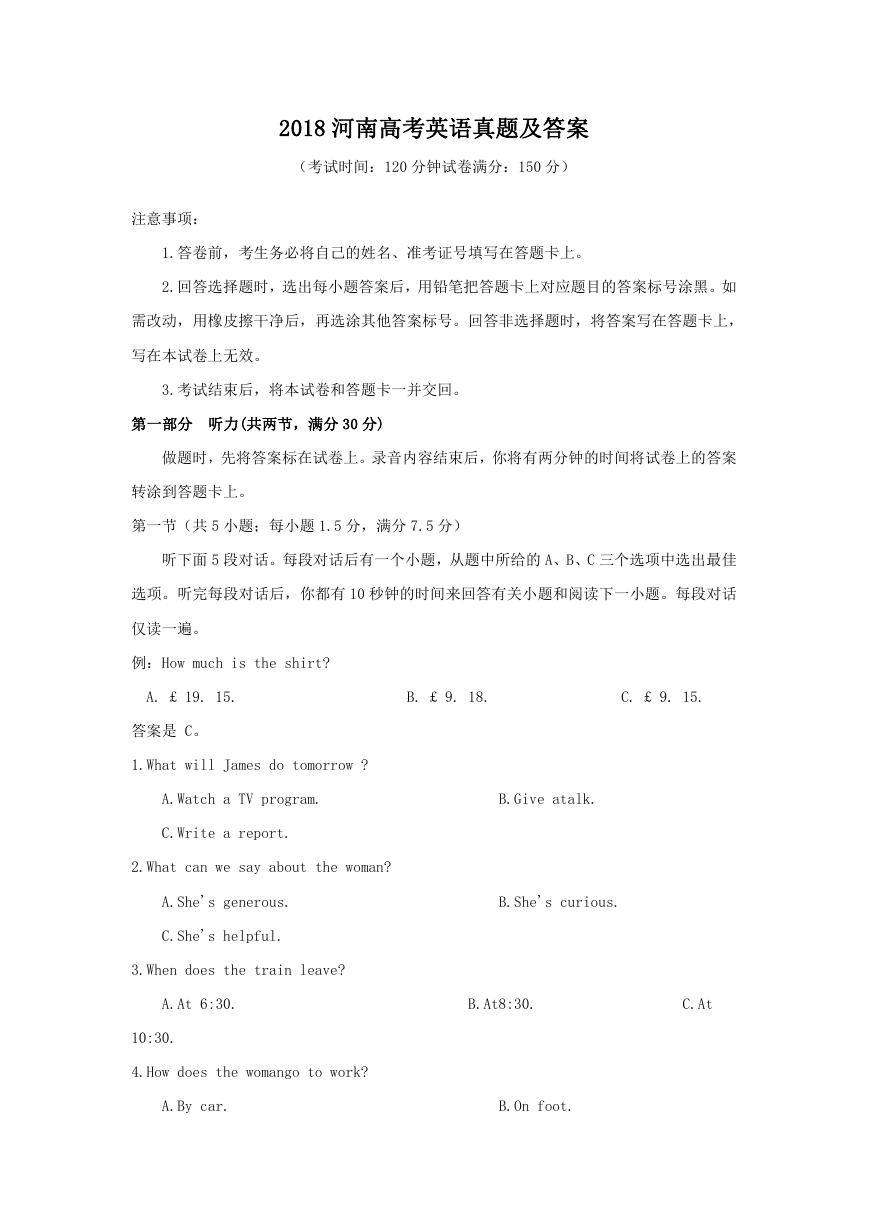
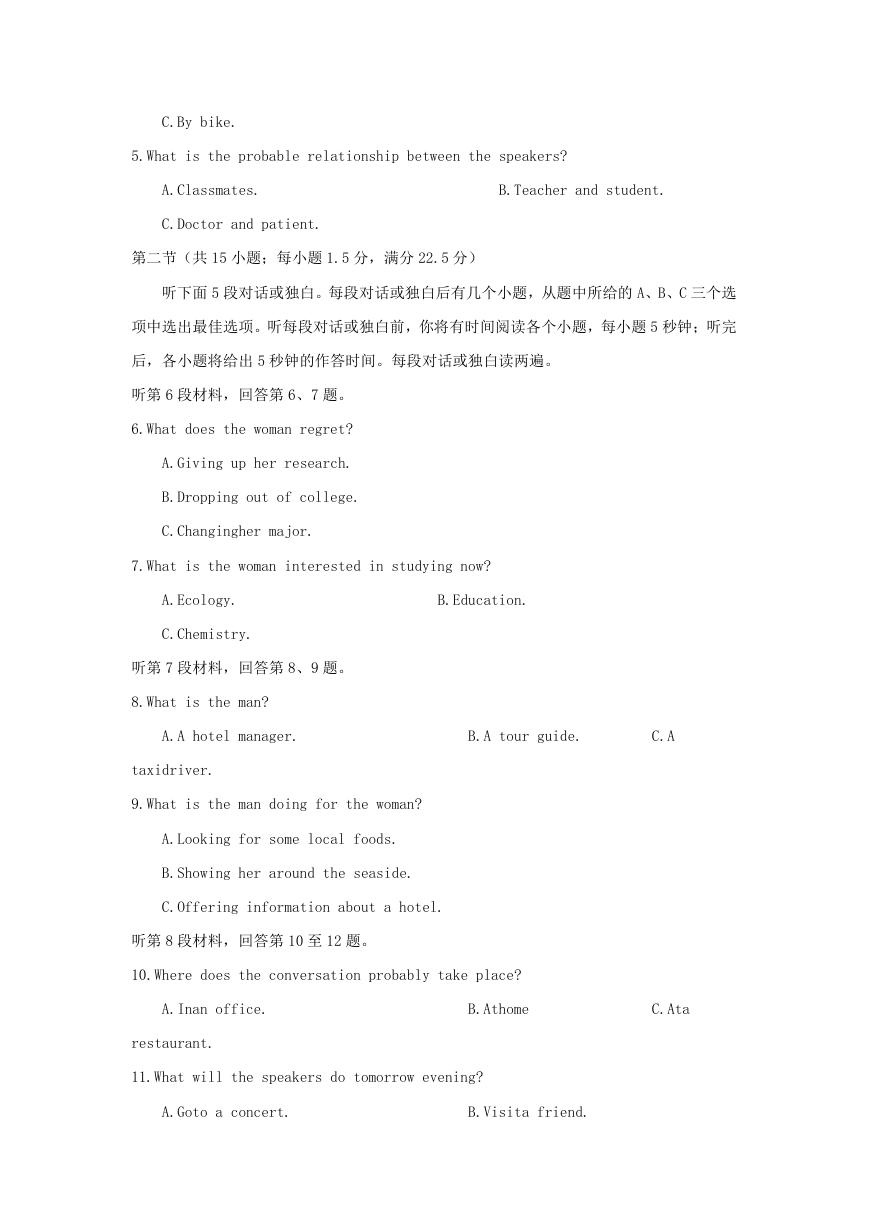
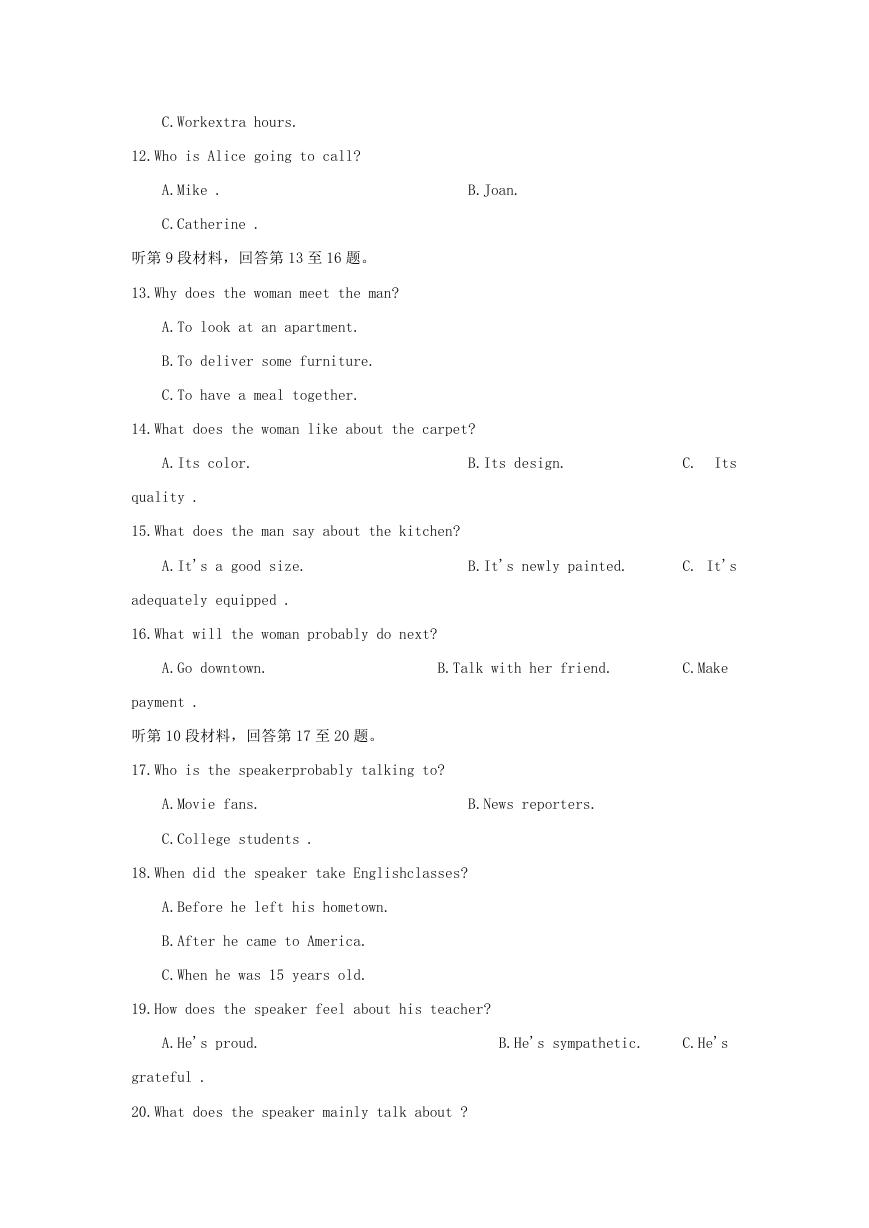
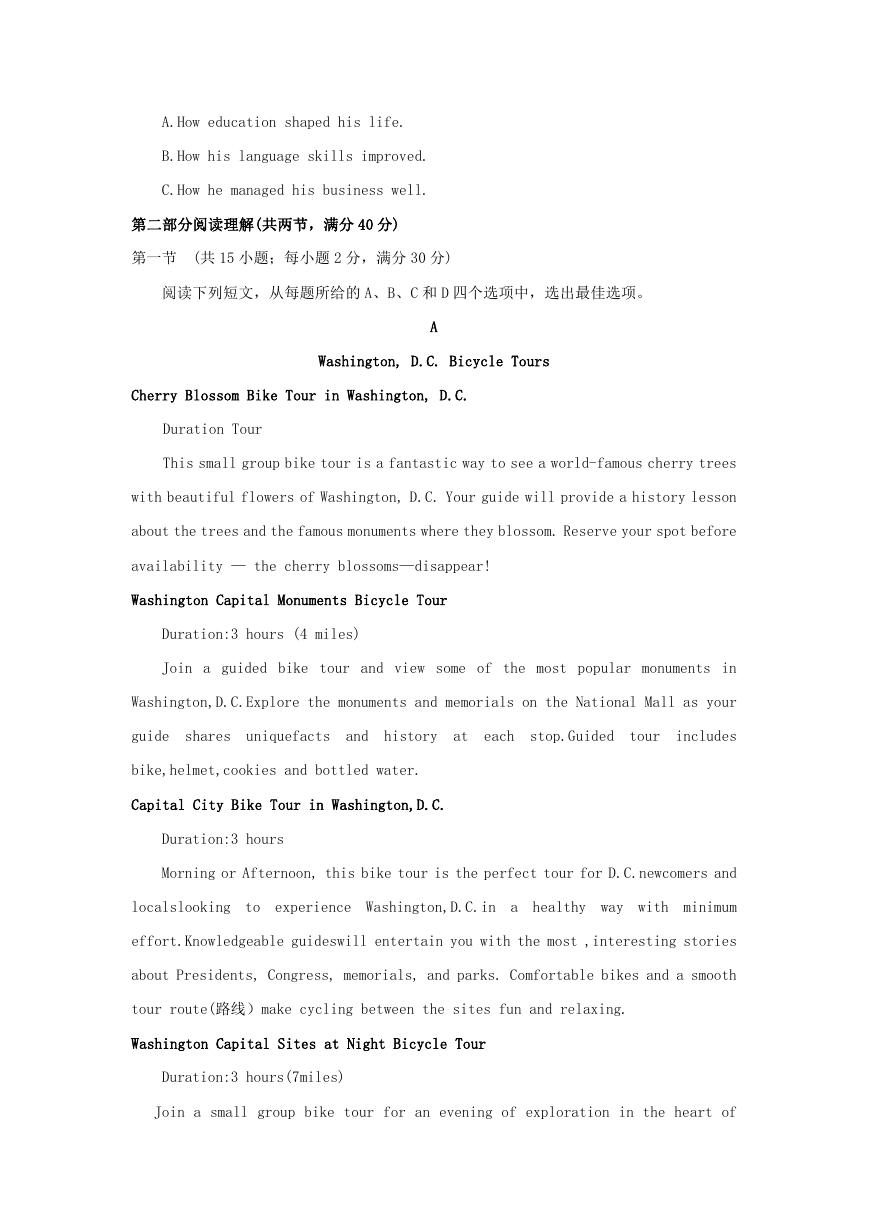

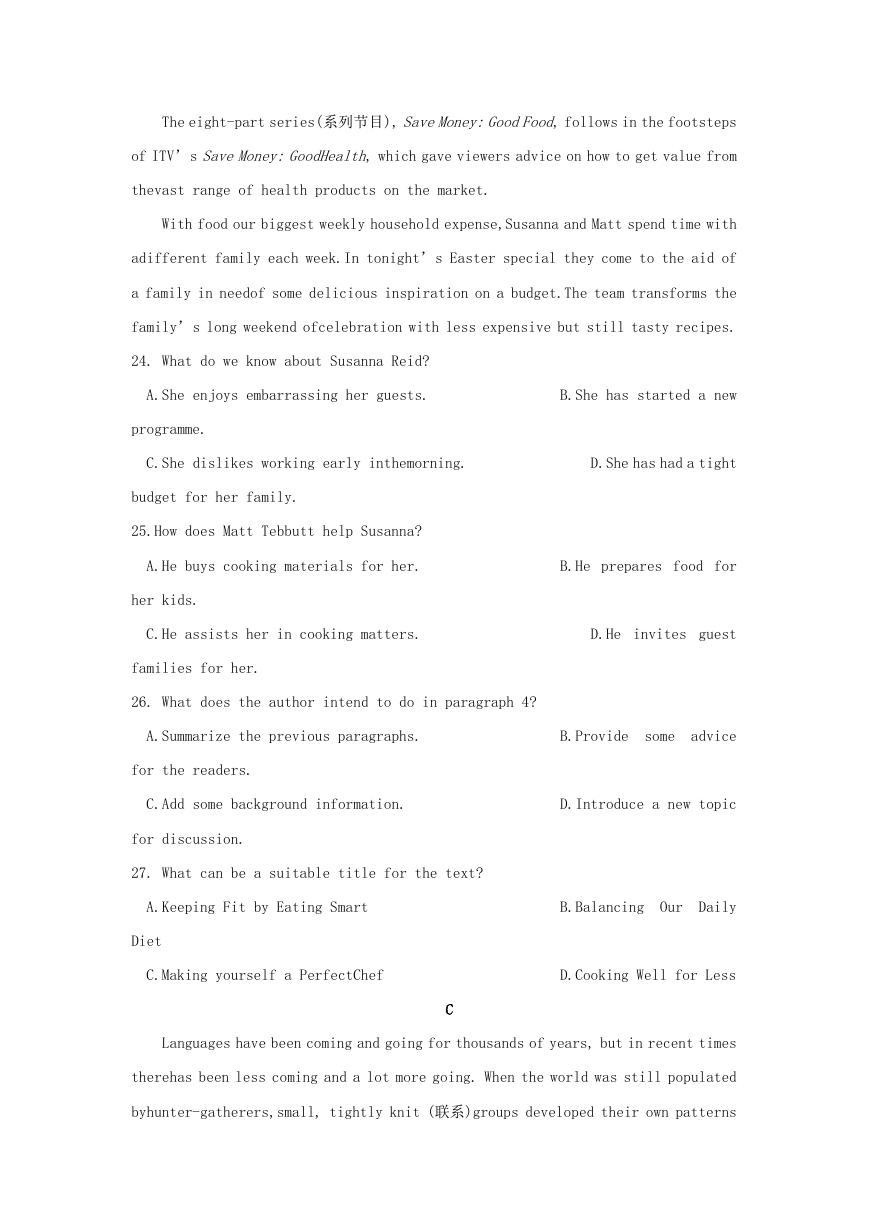
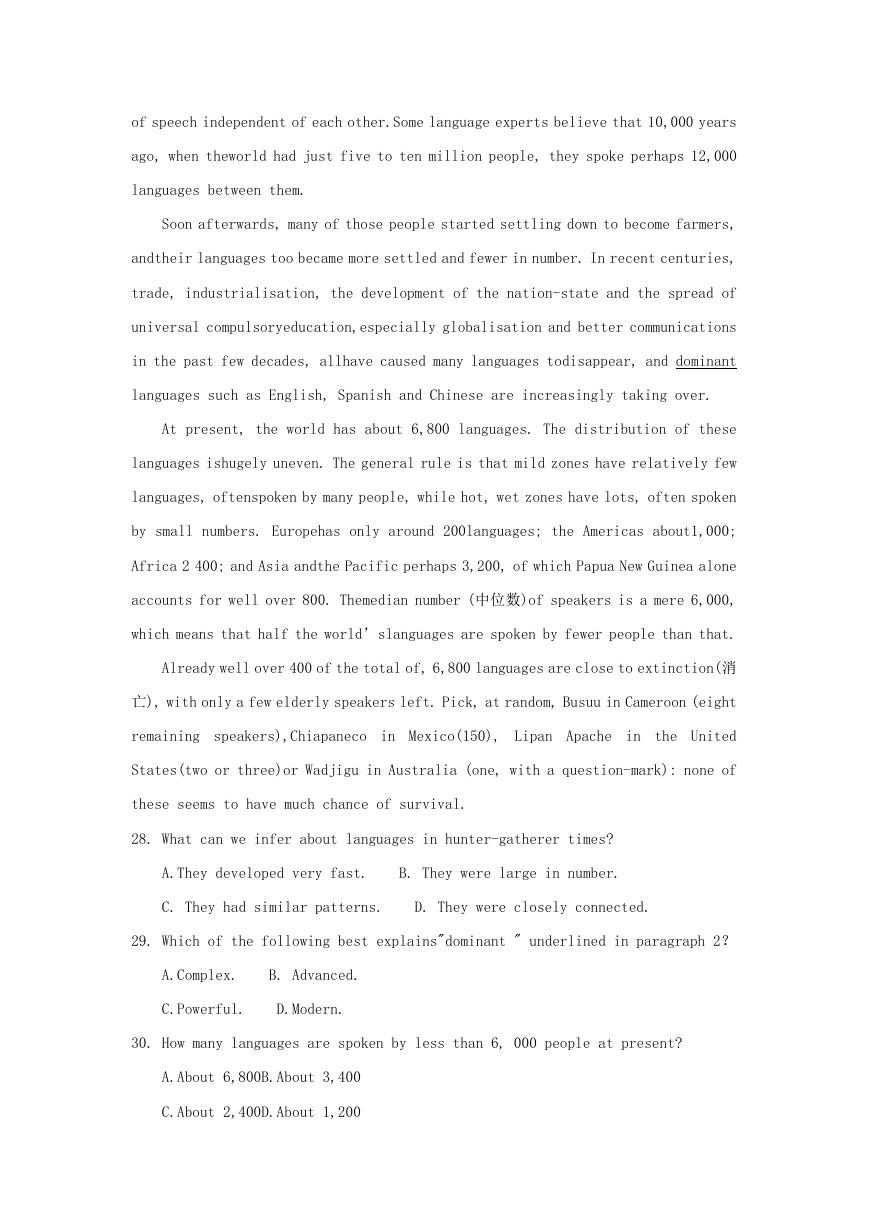
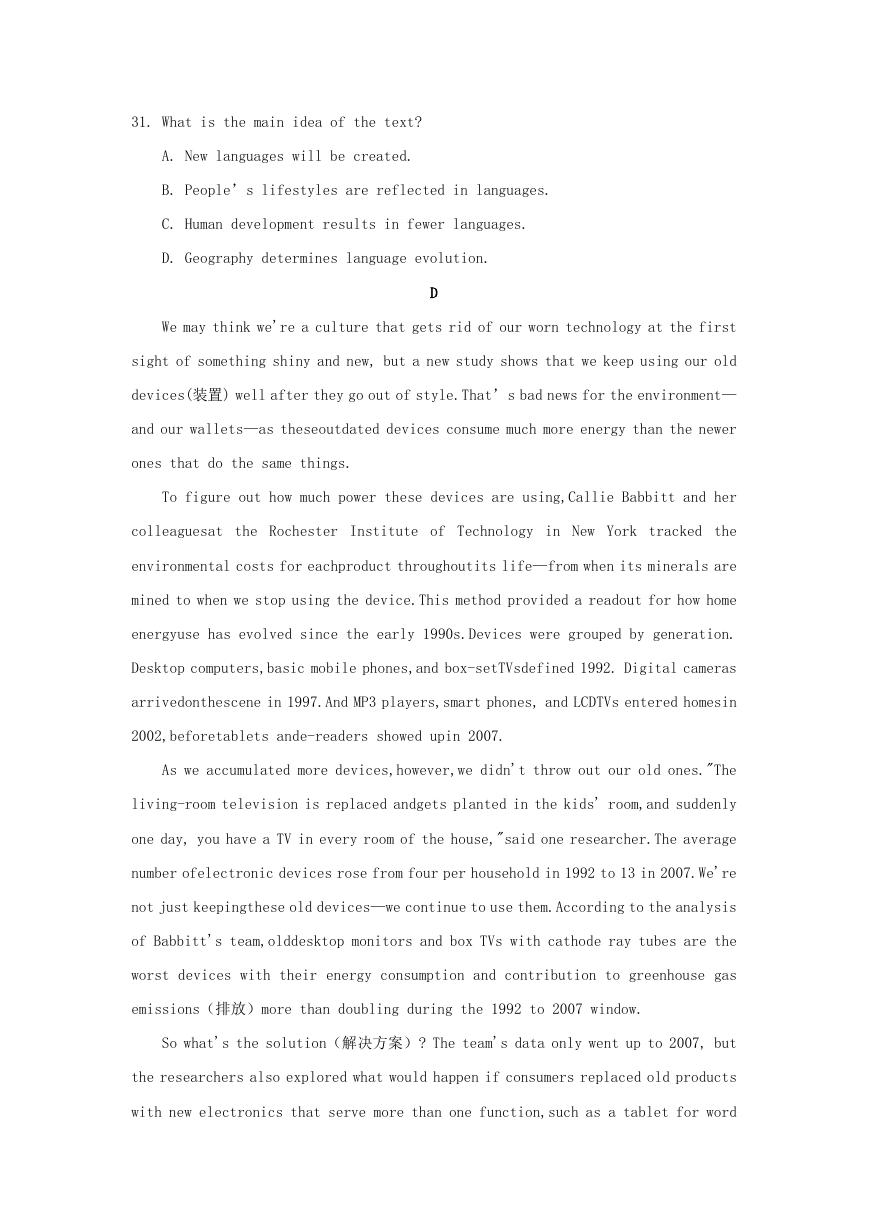








 2023年江西萍乡中考道德与法治真题及答案.doc
2023年江西萍乡中考道德与法治真题及答案.doc 2012年重庆南川中考生物真题及答案.doc
2012年重庆南川中考生物真题及答案.doc 2013年江西师范大学地理学综合及文艺理论基础考研真题.doc
2013年江西师范大学地理学综合及文艺理论基础考研真题.doc 2020年四川甘孜小升初语文真题及答案I卷.doc
2020年四川甘孜小升初语文真题及答案I卷.doc 2020年注册岩土工程师专业基础考试真题及答案.doc
2020年注册岩土工程师专业基础考试真题及答案.doc 2023-2024学年福建省厦门市九年级上学期数学月考试题及答案.doc
2023-2024学年福建省厦门市九年级上学期数学月考试题及答案.doc 2021-2022学年辽宁省沈阳市大东区九年级上学期语文期末试题及答案.doc
2021-2022学年辽宁省沈阳市大东区九年级上学期语文期末试题及答案.doc 2022-2023学年北京东城区初三第一学期物理期末试卷及答案.doc
2022-2023学年北京东城区初三第一学期物理期末试卷及答案.doc 2018上半年江西教师资格初中地理学科知识与教学能力真题及答案.doc
2018上半年江西教师资格初中地理学科知识与教学能力真题及答案.doc 2012年河北国家公务员申论考试真题及答案-省级.doc
2012年河北国家公务员申论考试真题及答案-省级.doc 2020-2021学年江苏省扬州市江都区邵樊片九年级上学期数学第一次质量检测试题及答案.doc
2020-2021学年江苏省扬州市江都区邵樊片九年级上学期数学第一次质量检测试题及答案.doc 2022下半年黑龙江教师资格证中学综合素质真题及答案.doc
2022下半年黑龙江教师资格证中学综合素质真题及答案.doc